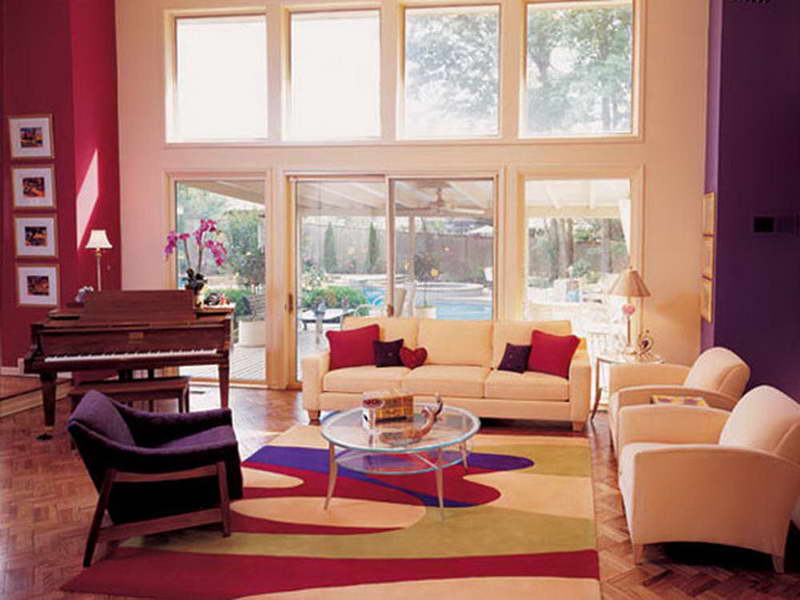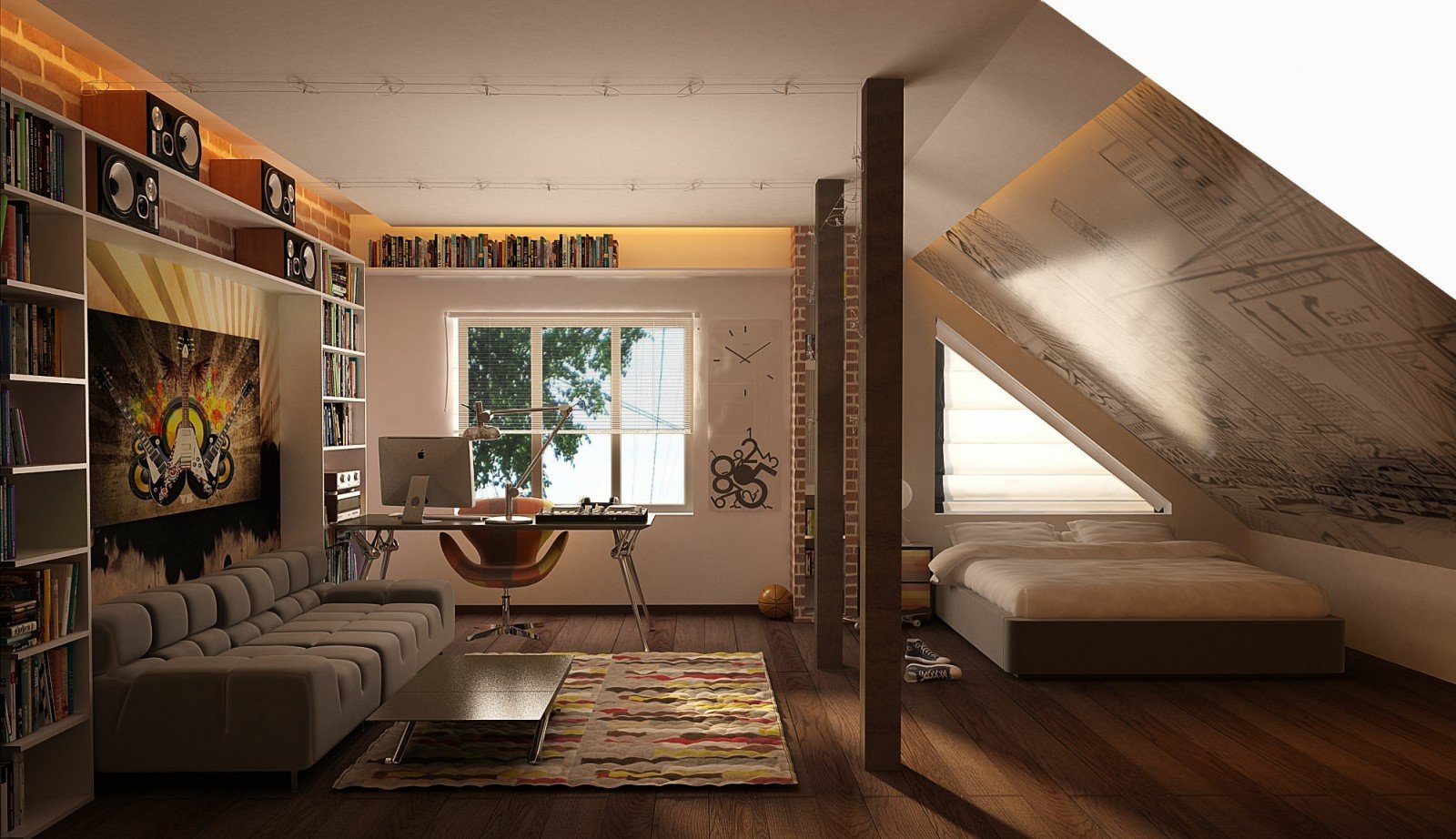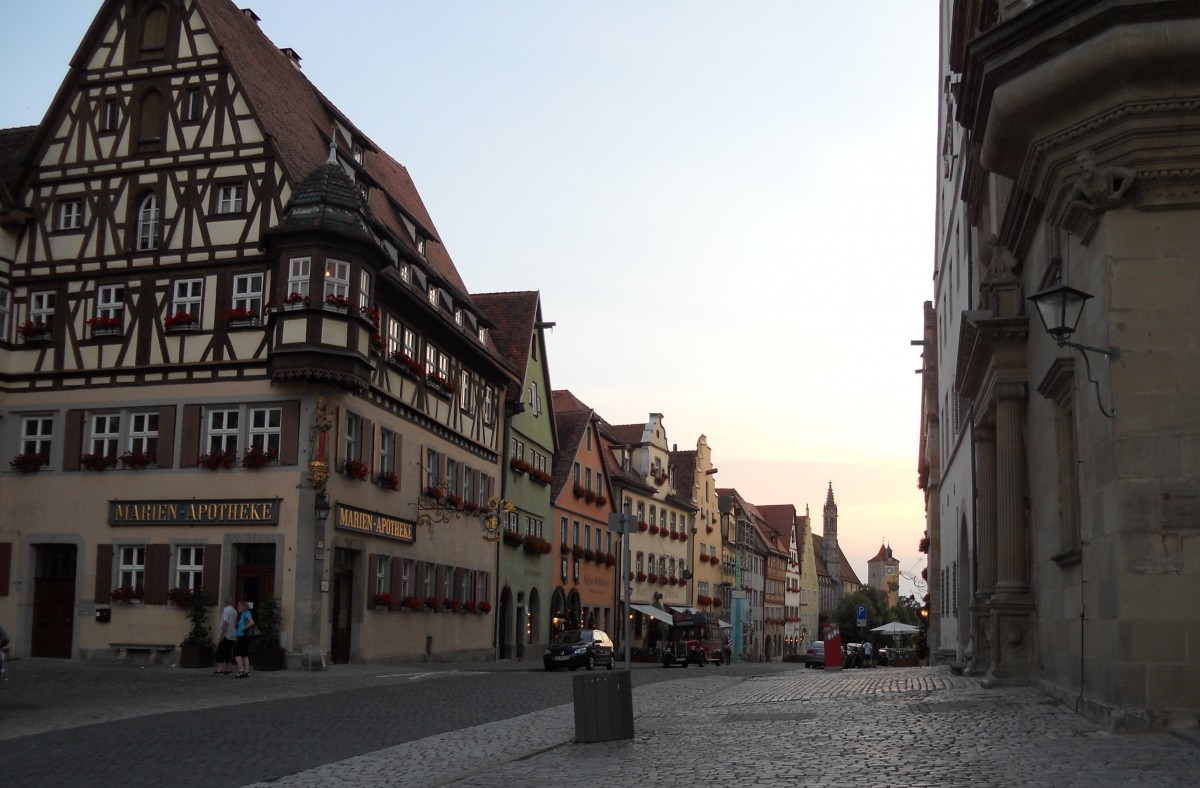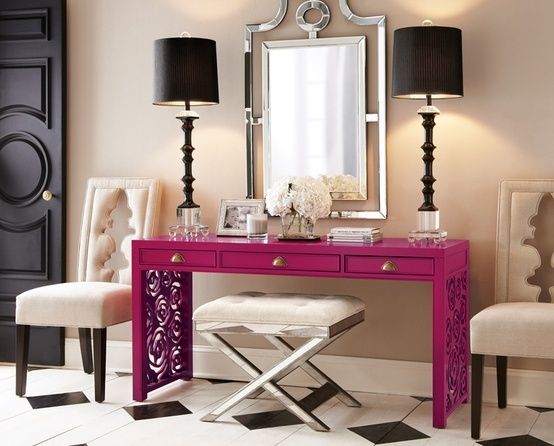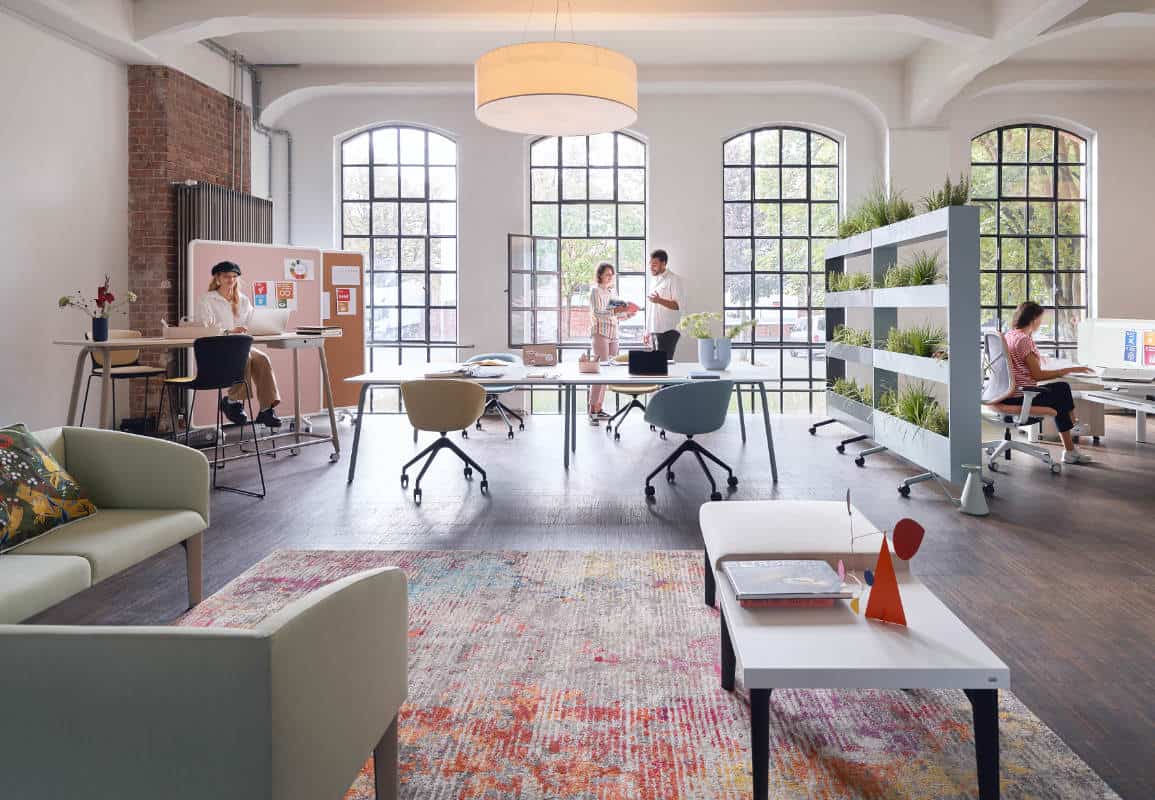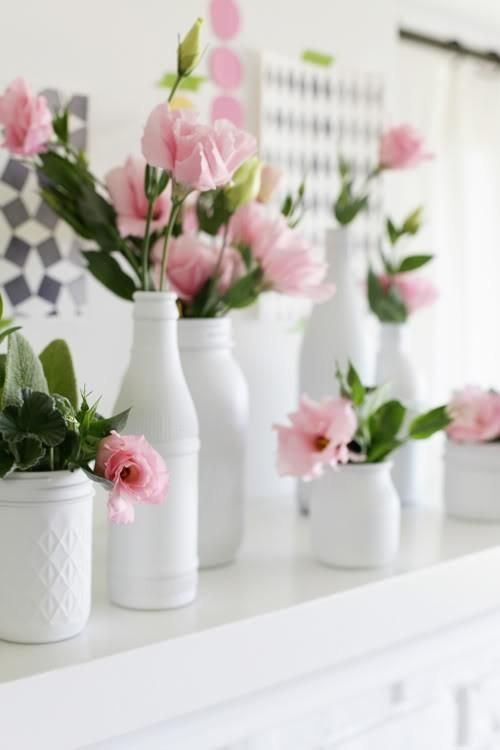In the realm of modern work culture, the significance of a creative office space and workspaces cannot be overstated. It’s more than just a physical environment; it’s a catalyst for innovation, collaboration, and workplace wellbeing. As companies strive to foster productivity and employee well-being, the design and layout of workspaces have evolved significantly over time.
The concept of creative office workspaces has roots in the early 20th century when businesses started recognizing the impact of workspace aesthetics on employee performance. Today, these office spaces are characterized by open floor plans, vibrant colors, flexible furniture arrangements, and recreational areas that break away from traditional cubicle setups. This evolution aligns with an understanding that an inspiring open space can stimulate workplace wellbeing and boost morale among employees.
Wouldn’t you love to work in an environment where creative thinking is the driving force behind the company and that space was designed just for that purpose? There are companies in the world that adhere to this policy and design their offices for employee comfort, knowing that this sparks and encourages creativity. A happy employee is a productive one. That is the lesson behind these amazing creative office spaces.
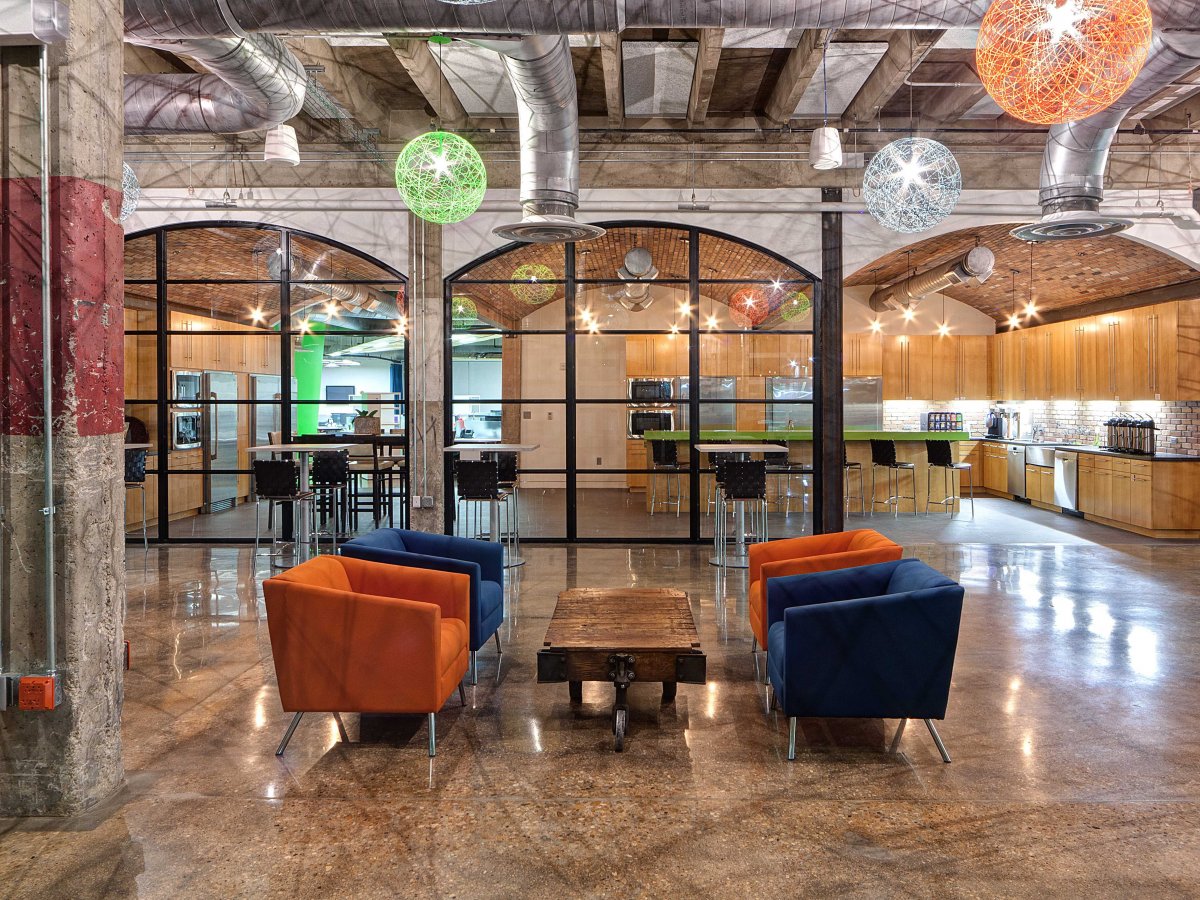
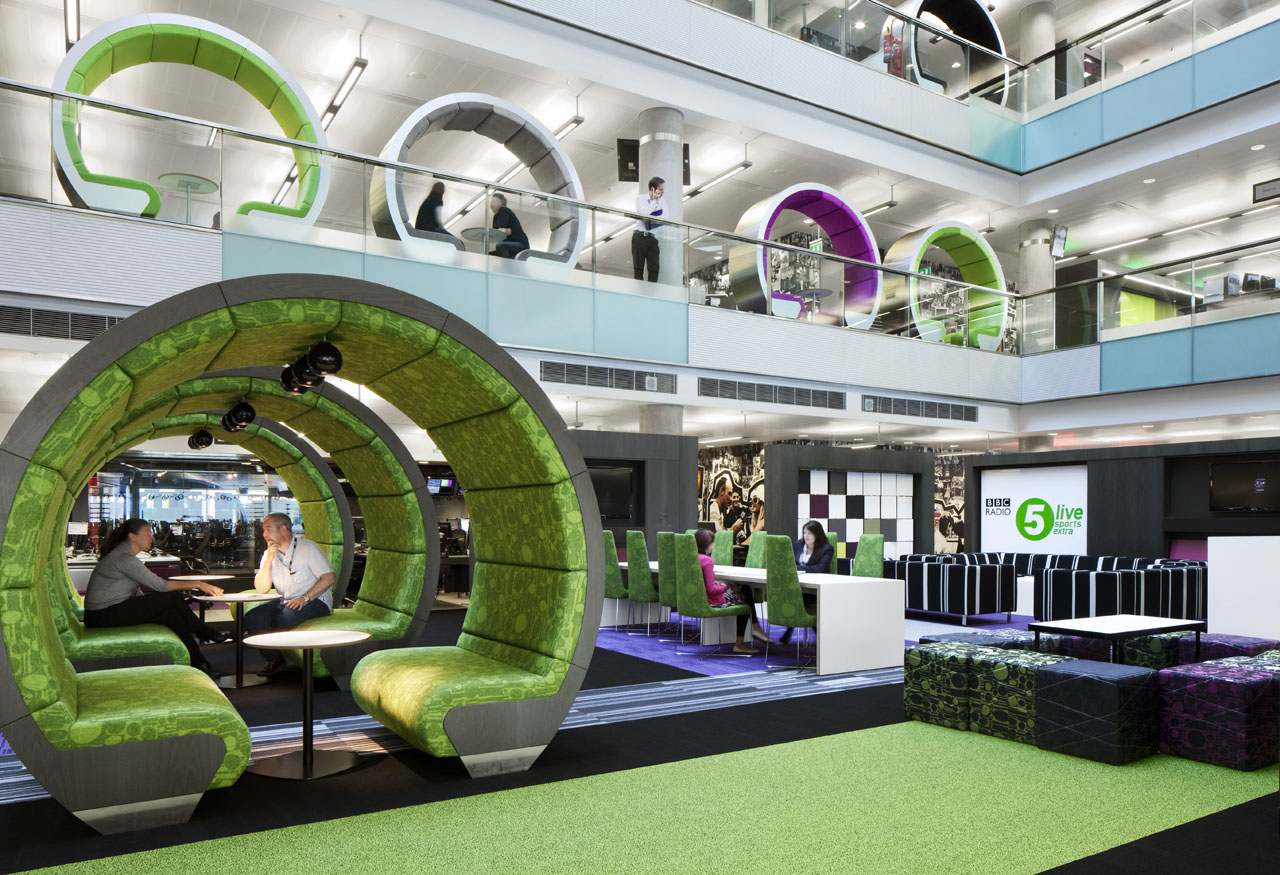
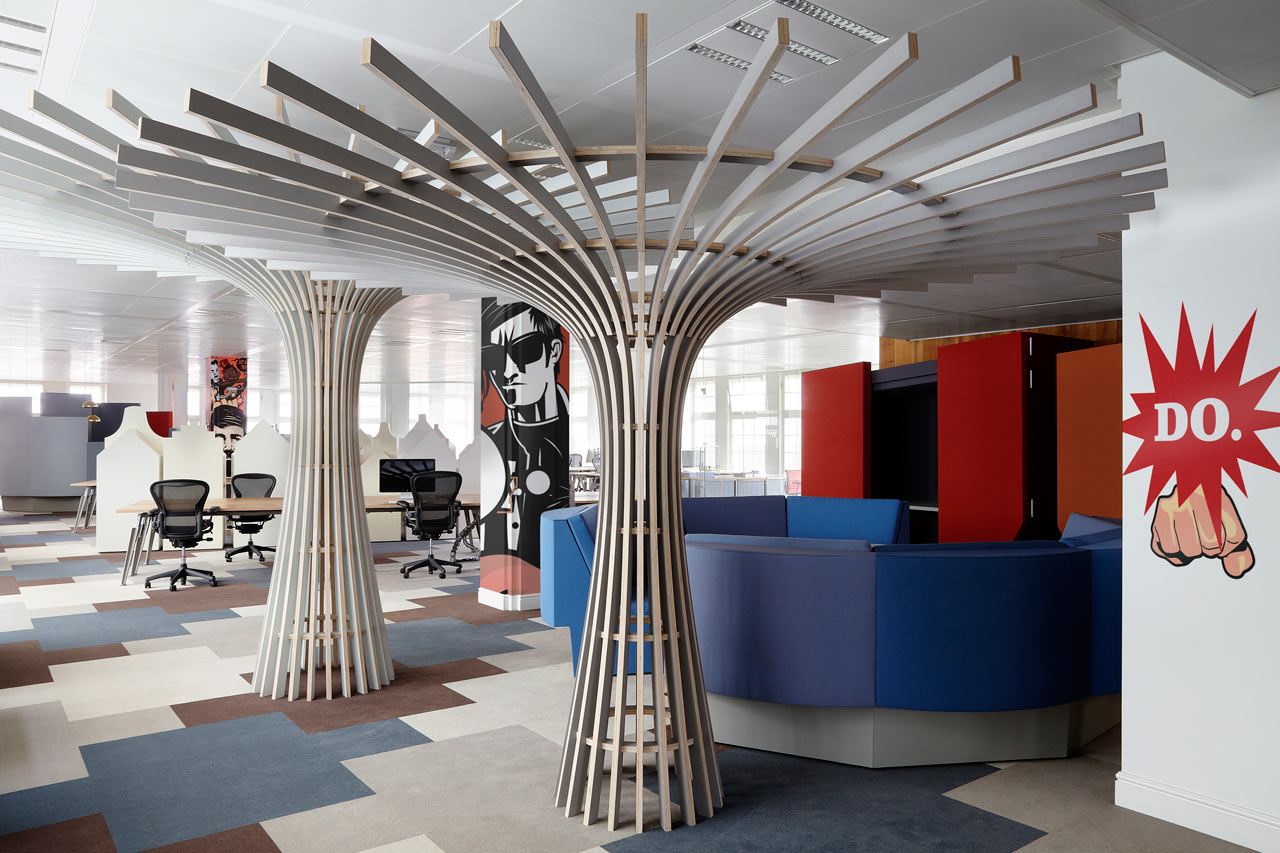
Google is one of the most creative in office design. This company’s offices are geared toward creative flow. The offices incorporate elements of convenience, conversation and even play to make employees feel comfortable sharing ideas. The over-the-top design encourages interaction among employees.
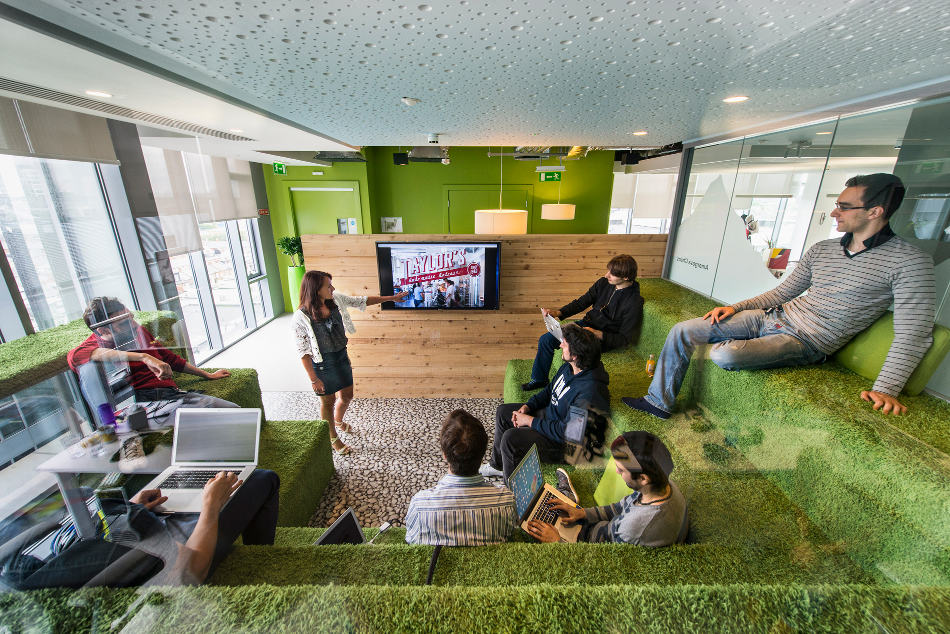
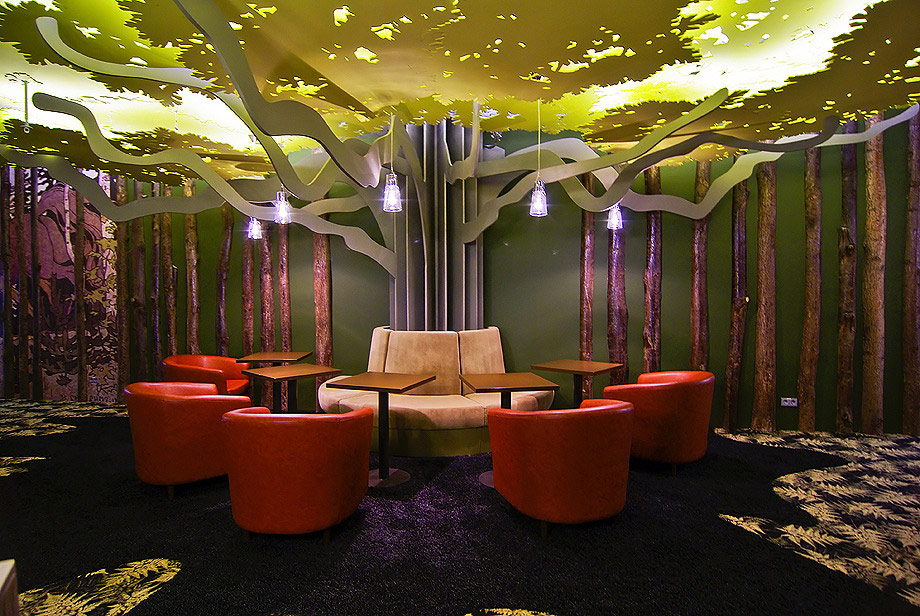
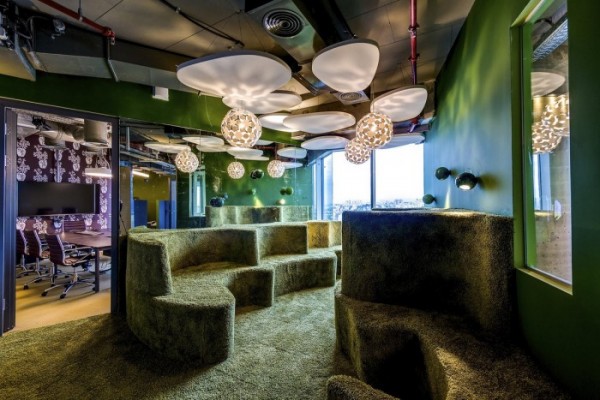
Color and fun themes are centerpiece to creative office spaces. Certain bold colors are known to stimulate the mind and senses. Themes create an office space that is enjoyable to work in, therefore boosting productivity.
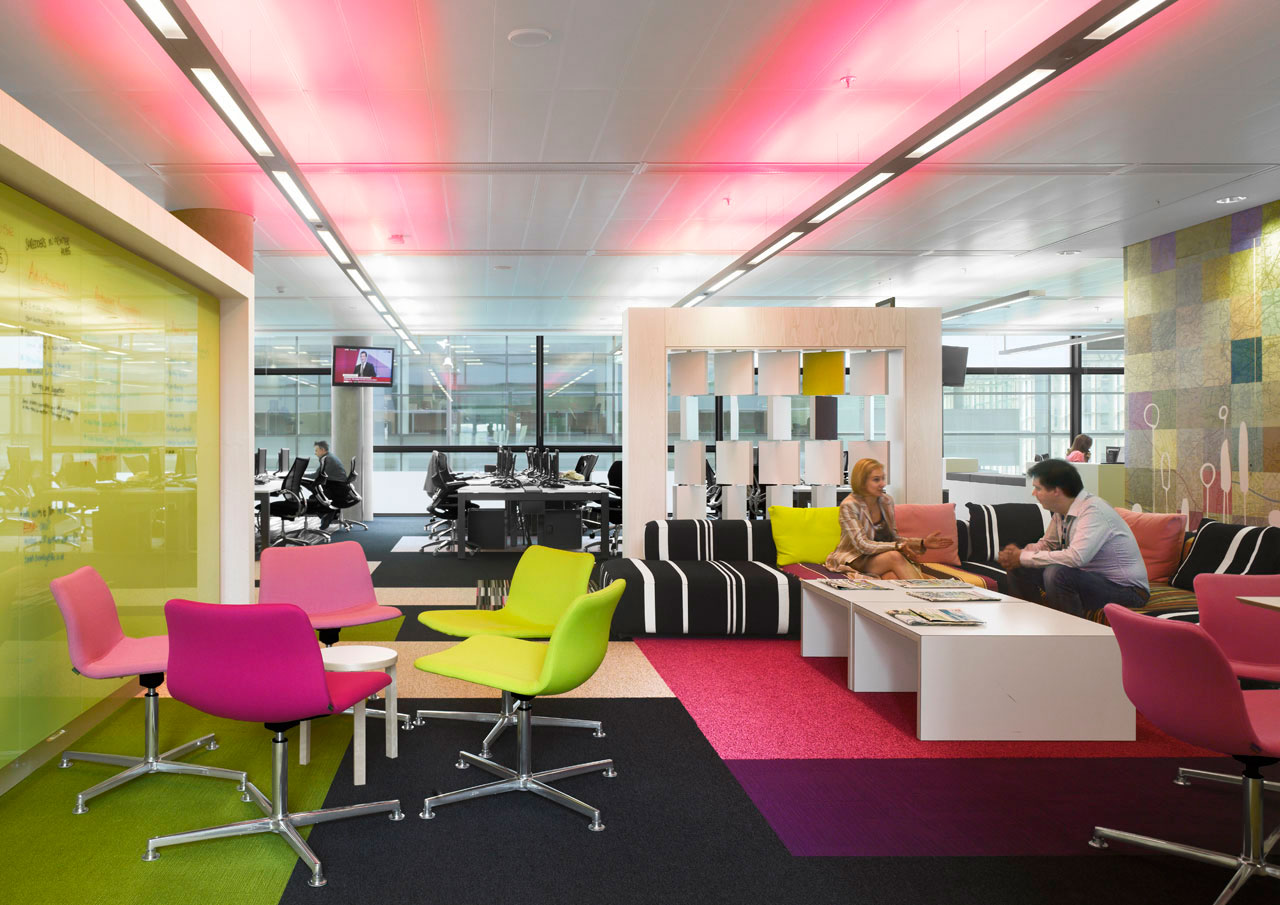
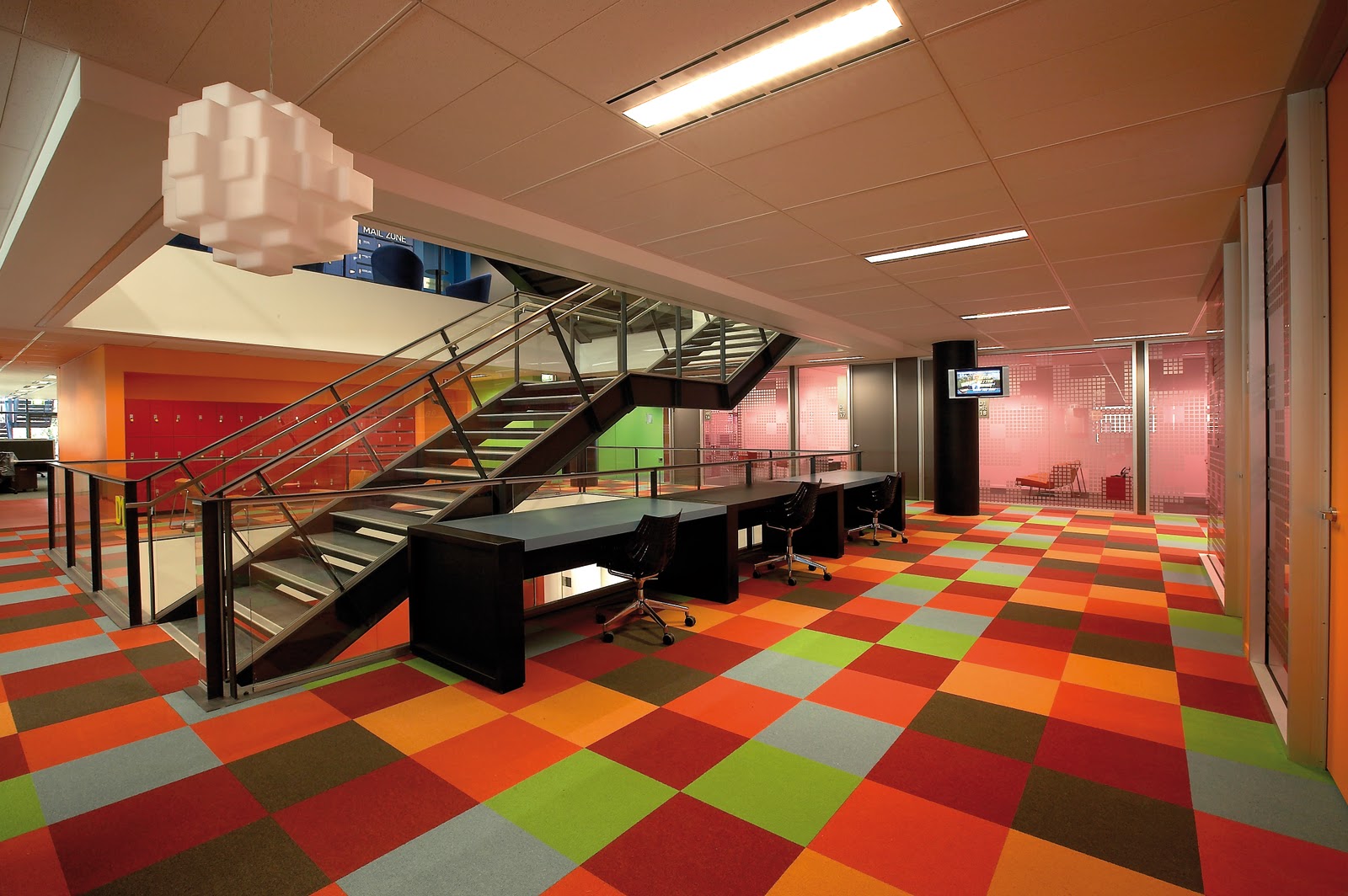
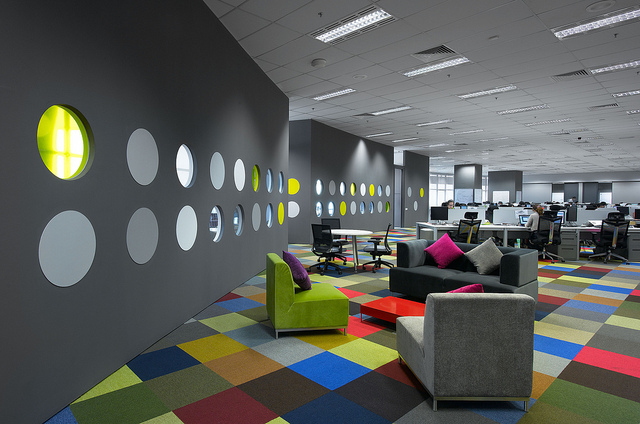
Natural elements are employed in the creative office sometimes in quite dramatic ways. For employees who spend their days indoors, bringing a little of the outdoors in provides a visual and psychological boost.
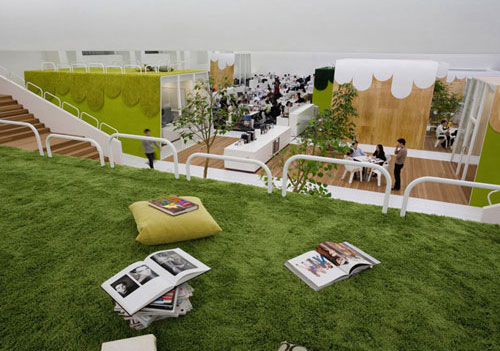

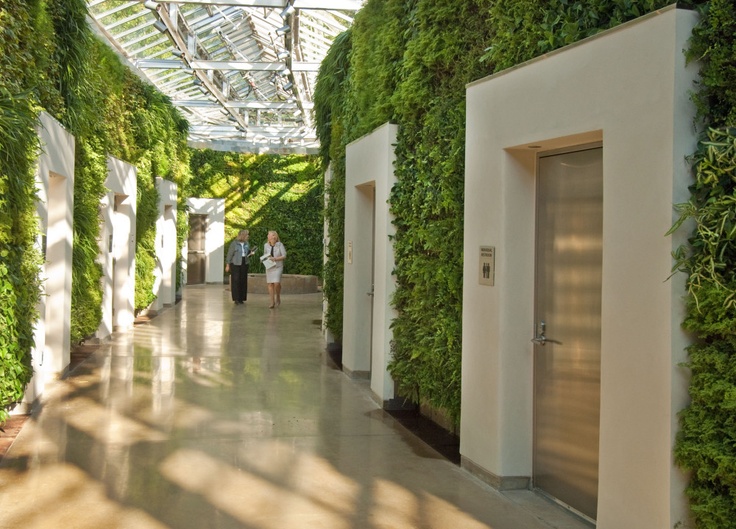

Areas of relaxation, where ideas are born, are quirky and fun. Creative office spaces employ all manner of pods, enclosed areas and nooks. Some companies even let the employees design their own space.

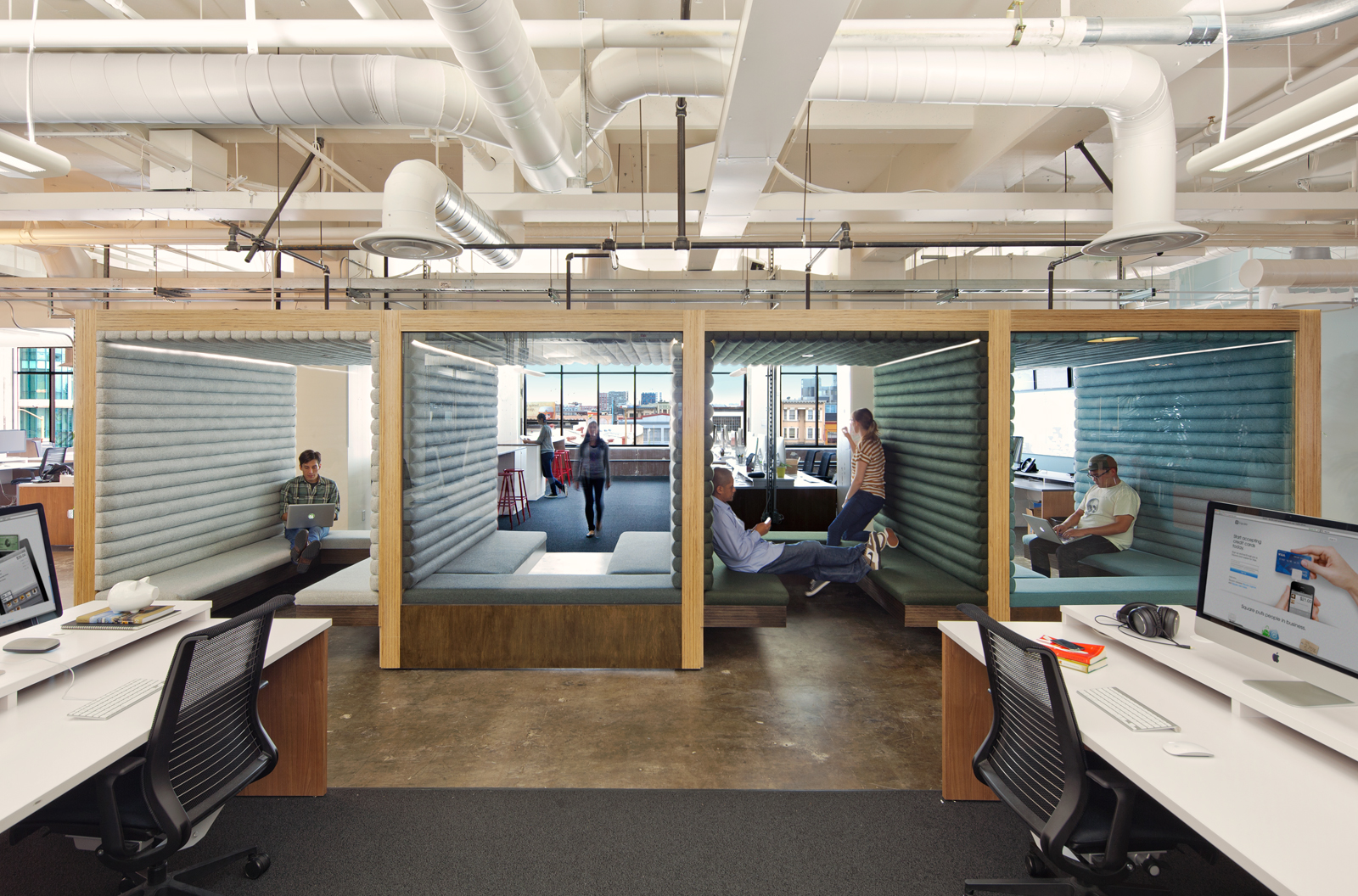


Open meeting spaces provide plenty of room to spread out comfortably. Games are included to encourage socialization and sharing of ideas and opinions.
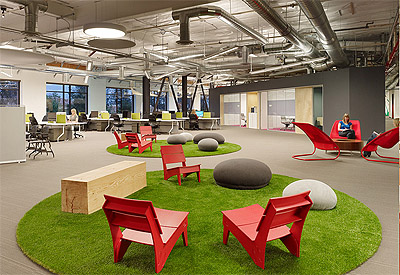
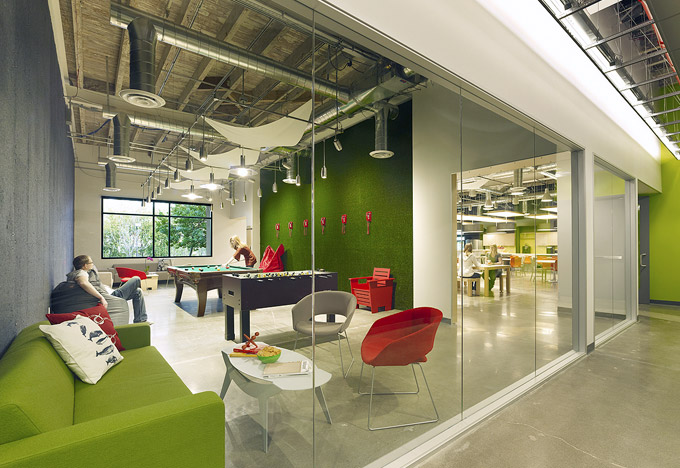

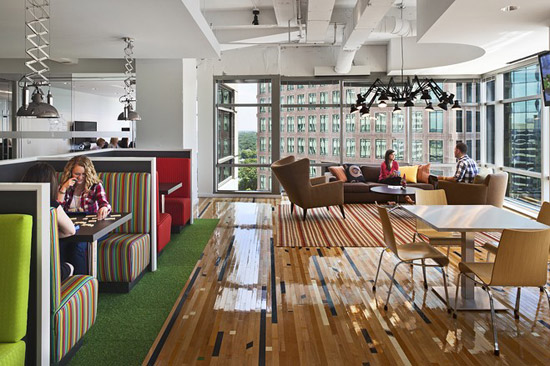
Innovative and fun, these creative office spaces turn an ordinary workspace into one that is enjoyed; where employees love coming to work and feel open to share their ideas.
Defining Creative Office Spaces
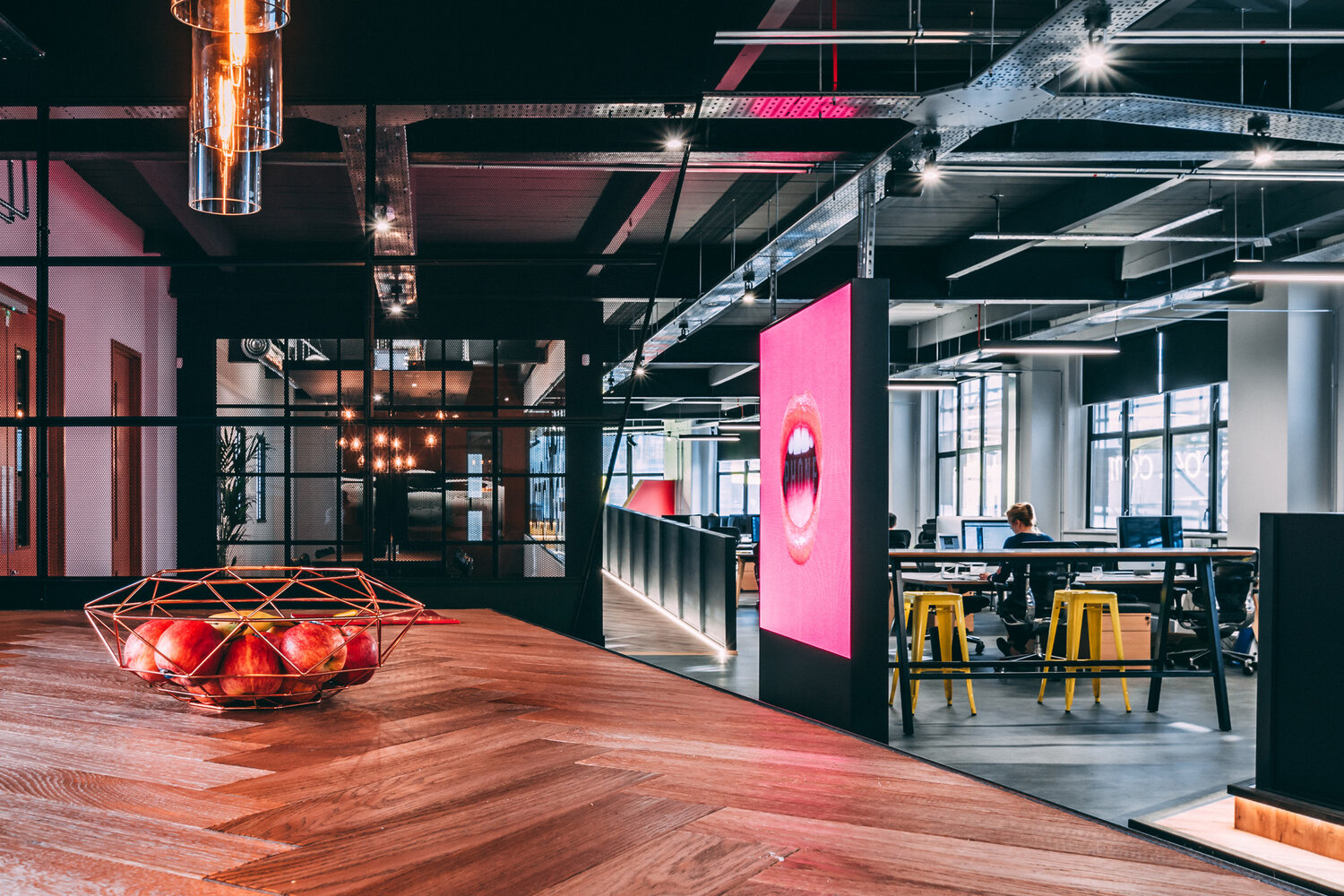
Innovative Design Concepts
Creative office spaces often incorporate modular furniture to create adaptable workspaces. This means that the furniture can be easily rearranged to suit different tasks or group sizes in companies. For example, desks with wheels allow employees to reconfigure their workplace for collaborative projects.
These offices prioritize sustainable materials for eco-friendly design. This might include choosing energy-efficient lighting and appliances for workplace. By doing so, they reduce the environmental impact of their operations while also promoting a sense of social responsibility among employees and working staff.
Moreover, creative workplace spaces implement ergonomic design principles to ensure staff comfort and wellbeing. This involves providing adjustable chairs, standing desks, and other ergonomic accessories that support good posture and reduce physical strain during long hours at work.
Embracing Unconventional Layouts
One hallmark of creative workplace spaces is the use of non-linear floor plans, which encourage movement and interaction among employees. The workplace features open areas where staff can work independently but also come together easily when collaboration is needed.
Furthermore, mixed-use workplace spaces are utilized within these environments to foster collaboration and creativity among staff. For instance, a workplace lounge area may double as a meeting space or an impromptu brainstorming zone where staff can gather informally to exchange ideas.
Flexible layouts are incorporated into creative workplace designs to accommodate diverse work styles. The workplace means having designated quiet zones for focused tasks alongside communal areas for team discussions and social interactions.
Biophilic Design Elements
Biophilic design in creative office spaces involves introducing natural elements such as natural light, greenery, and staff into the workplace environment. Large windows allow ample sunlight to filter into the workplace while potted plants bring touches of nature indoors.
Moreover, organic shapes inspired by nature are incorporated into the overall aesthetic of these workplaces through architectural details like curved walls or irregularly shaped furniture pieces that mimic natural forms found in the environment.
Furthermore, natural materials such as wood flooring or stone countertops are used throughout these spaces not only for their durability but also for their ability to evoke a connection with nature within an indoor setting.
Benefits of Creative Work Environments
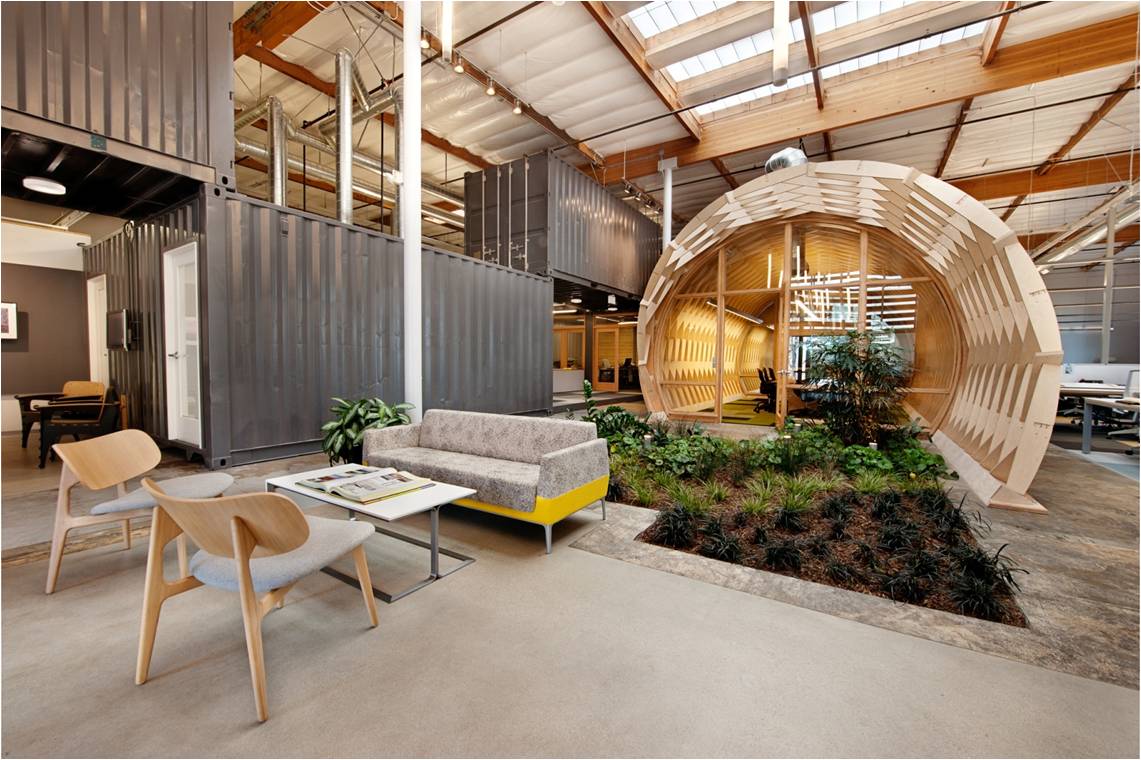
Enhanced Productivity
Creative workplace spaces contribute to enhanced productivity by providing adjustable desks and ergonomic chairs for staff. The workplace features ensure that staff are comfortable while working, thus promoting better focus and efficiency. Offering noise-cancelling features minimizes distractions in the workplace, allowing staff to concentrate on their tasks without disruptions. By integrating task management tools and software into the workplace, companies can streamline processes and boost overall productivity.
For example, a study conducted by Harvard Business Review found that employees who worked in adjustable desks were 46% more productive compared to those with traditional fixed-height desks.
Curating inspiring art installations and creative displays throughout the workplace is essential for stimulating creativity among employees. These visual workplace elements serve as sources of inspiration and motivation, encouraging innovative thinking and problem-solving skills. Establishing designated brainstorming areas in the workplace with writable surfaces fosters an environment where ideas can flow freely without constraints. Hosting regular innovation workshops and design thinking sessions further nurtures creativity within the workplace.
After implementing creative displays such as vibrant murals and interactive installations in their workplace, they reported a significant increase in employee engagement levels along with a surge in innovative ideas shared during brainstorming sessions.
Improved Well-being
Incorporating wellness programs into creative workplace significantly contributes to improved well-being among employees. Offering yoga classes, meditation spaces, or access to fitness programs at the workplace promotes physical health while also reducing stress levels. Providing healthy snacks, hydration stations, relaxation zones allows employees to maintain balanced nutrition throughout their workday which positively impacts their overall well-being.
A case study from a tech company revealed that after introducing wellness programs such as weekly yoga classes and healthy snack options at their workspace led to a noticeable decrease in employee absenteeism due to illness over six months.
Creating agile work settings involves implementing mobile furniture solutions for versatile workspace configurations. This adaptability allows teams to customize their surroundings based on specific project requirements or collaborative needs efficiently. Designing multi-functional areas that can adapt to different team needs ensures that space utilization is optimized effectively. Incorporating agile project management methodologies into the office layout streamlines workflows while enabling teams to respond quickly to changing project demands.
Maximizing Natural Light
Maximizing natural light is crucial for creating an inspiring and productive work environment. Open space planning plays a significant role in achieving this goal. By designing spacious communal areas, such as breakout zones and collaborative spaces, employees are encouraged to interact socially and work together as a team.
Transparent dividers or low partitions can be strategically placed throughout the office to maintain an open atmosphere while still providing some level of privacy. This design approach not only allows for unobstructed views across the office space but also fosters connectivity among employees. For example, instead of traditional cubicles, using transparent materials like glass or acrylic for dividers can create an airy and cohesive workspace.
Utilizing transparent materials is another effective way to maximize natural light in a creative office space. Glass walls and see-through partitions contribute to fostering transparency and openness within the workplace. Showcasing the building’s structural elements as part of the interior design can further enhance the flow of natural light throughout the office.
Incorporating clear acrylic or lucite furniture pieces into the office layout not only adds a modern aesthetic but also allows light to pass through them, contributing to a bright and vibrant atmosphere within the workspace. These transparent materials not only promote visual connectivity but also help distribute natural light evenly across different areas of the office.
Incorporating Nature Indoors
Plant-Filled Interiors
Incorporating nature indoors is a game-changer. Introducing indoor gardens, living walls, and potted plants not only enhances the aesthetic appeal but also serves as natural air purifiers. Imagine walking into an office lobby adorned with lush greenery, creating a refreshing and calming atmosphere for both employees and visitors. Moreover, embracing biophilic design by integrating natural elements like moss walls or tree-inspired structures can significantly elevate the overall ambiance of the workspace.
Creating a green oasis within the office environment doesn’t just contribute to aesthetics; it also plays a vital role in improving air quality. By strategically placing plants throughout the office space, businesses can effectively reduce pollutants and enhance oxygen levels. This not only promotes physical well-being but also boosts mental clarity and productivity among employees.
Natural Textures
In addition to introducing plant-filled interiors, incorporating natural textures such as wood, stone, or textured fabrics further amplifies the connection between nature and workspaces. Utilizing earthy materials like rattan, jute, or cork adds warmth and invites a sense of comfort into the office setting. These tactile surfaces create an inviting ambiance that encourages relaxation while fostering creativity and innovation among employees.
Moreover, adding visual interest through textured wall coverings or 3D panels brings depth and character to otherwise plain walls. This approach transforms mundane partitions into captivating focal points within the workspace without compromising on professionalism.
Ergonomic Design for Productivity
Comfortable Workstations
Providing comfortable workstations is essential. Employees spend long hours at their desks, so ergonomic chairs with lumbar support and adjustable features are crucial. These chairs help maintain good posture and reduce the risk of back pain. Offering height-adjustable desks allows employees to switch between sitting and standing, promoting movement throughout the day. Proper lighting, temperature control, and acoustics in individual work areas also play a significant role in creating a comfortable environment.
Ensuring that the office has appropriate lighting helps prevent eye strain and fatigue. Controlling the temperature maintains a pleasant atmosphere conducive to productivity. Moreover, managing acoustics reduces distractions and supports concentration.
Dynamic Furniture Options
Dynamic furniture options contribute to a versatile office space that can adapt to various needs. Introducing convertible furniture pieces that serve multiple functions maximizes space efficiency while catering to different tasks or activities within the workspace. For instance, a table that can transform into a whiteboard provides flexibility for collaborative brainstorming sessions.
Incorporating movable seating options such as bean bags or ottomans offers employees alternative places to work or relax beyond traditional desk setups. This variety encourages movement and creativity while accommodating diverse working styles.
Utilizing modular furniture systems allows for easy reconfiguration based on changing requirements without having to invest in entirely new pieces of furniture each time there’s an adjustment needed in the workspace layout.
Artistic Elements in the Office
Visual Aesthetics
Think about using colors that complement each other. For instance, pairing soft pastels with neutral tones can create a calming and welcoming atmosphere. Consider incorporating visually striking architectural elements or statement artwork to serve as focal points within the office. This could be large-scale paintings, sculptures, or even unique wall textures that add visual interest.
Using lighting fixtures as decorative accents is another way to enhance the overall visual appeal of the workspace. Pendant lights with warm-toned bulbs can create an inviting ambiance in common areas or meeting spaces. Similarly, adjustable track lighting can highlight specific areas such as collaborative zones or display walls where artwork is showcased.
Color Psychology
Incorporating calming hues like blues and greens in relaxation areas or breakout spaces can help employees unwind and recharge during their breaks. Consider adding comfortable seating upholstered in these soothing colors to encourage relaxation. On the other hand, for collaborative zones intended to stimulate creativity and innovation, consider using energizing colors like reds or oranges in strategic ways – perhaps through accent walls or vibrant furniture pieces.
Balancing neutral tones with pops of vibrant colors is crucial for creating a harmonious environment without overwhelming employees with sensory overload. For example, you might opt for neutral-colored desks and chairs while introducing lively splashes of color through decorative items like throw pillows, rugs, or wall art.
Flexible and Agile Office Layouts
Collaborative Zones
Collaborative zones play a crucial role in fostering teamwork and creativity within a creative office space. These areas are designed to encourage spontaneous interactions and idea generation among employees. For instance, comfortable seating arrangements, such as cozy couches or bean bags, can create a relaxed atmosphere that stimulates open discussions. Incorporating interactive whiteboard walls or digital collaboration hubs provides a platform for brainstorming sessions where ideas can be shared visually in real-time. By establishing dedicated team zones equipped with technology for group projects, companies enable their teams to work together seamlessly.
Moreover, the design of these collaborative zones often reflects the company’s culture and values. For example, an organization focused on sustainability might integrate nature-inspired elements into its collaborative spaces to promote environmental consciousness among employees. Such deliberate design choices not only enhance the aesthetic appeal of the office space, but also contribute to creating an environment that aligns with the company’s ethos.
Quiet Work Areas
In contrast to collaborative zones, quiet work areas cater to individuals who require concentration and minimal distractions while working. These spaces are essential for tasks that demand deep focus and attention to detail. Soundproof pods or private booths offer employees a secluded environment where they can engage in intensive cognitive activities without being disturbed by external noise sources. Furthermore, designated silent zones equipped with acoustic treatments effectively minimize disruptions from surrounding activities within the office space.
The availability of secluded nooks or alcoves further enhances the versatility of quiet work areas by providing additional options for employees seeking solitude during their tasks. This variety ensures that individuals have access to environments tailored specifically to their working preferences, ultimately contributing to increased productivity and job satisfaction.
Technology in Modern Office Design
Seamless Connectivity
In a creative office space, seamless connectivity is crucial for productivity. High-speed Wi-Fi access points should be strategically installed throughout the office to ensure uninterrupted internet access. Integrating wireless charging stations and connectivity hubs in communal areas can enhance convenience for employees.
Universal plug-in stations are also essential as they allow compatibility with various devices, eliminating the need for multiple adapters and chargers. For example, having USB ports alongside traditional power outlets enables employees to charge their smartphones or tablets without searching for adapters.
The integration of these features not only fosters a more connected environment but also promotes collaboration among team members by removing technological barriers.
Smart Office Features
Implementing smart office features enhances both efficiency and sustainability within a creative office space. Automated climate control systems based on occupancy sensors help regulate temperature and energy usage according to the number of people present in a particular area.
Voice-controlled assistants further contribute to hands-free operation of various office utilities, such as adjusting lighting settings or scheduling meetings. These voice-activated tools streamline tasks while reducing the reliance on manual input methods, making it easier for employees to focus on their creative work without interruptions.
Moreover, installing smart locks and access control systems provides enhanced security measures within the workspace. These advanced technologies offer secure entry options while allowing authorized personnel easy access through keyless entry mechanisms like digital badges or biometric scanners.
Health and Wellness in Workspace Design
Breakout Spaces
In a creative office space, breakout areas play a crucial role in fostering collaboration, creativity, and relaxation. These spaces are designed to promote informal meetings or simply provide employees with an environment where they can unwind. By incorporating casual lounges or cafe-style areas, companies create settings that encourage spontaneous interactions among colleagues.
Moreover, introducing recreational zones equipped with games, puzzles, or reading nooks contributes to the overall well-being of employees. These designated areas offer individuals the chance to take short breaks from work-related tasks and engage in activities that help reduce stress levels. For instance, providing comfortable seating arrangements along with board games allows workers to recharge their minds during brief pauses throughout the day.
Offering dedicated spaces for relaxation can significantly enhance employee satisfaction and productivity. By establishing secluded corners where staff members can momentarily disconnect from work pressures, companies demonstrate their commitment towards promoting a healthy work-life balance.
Fitness Integration
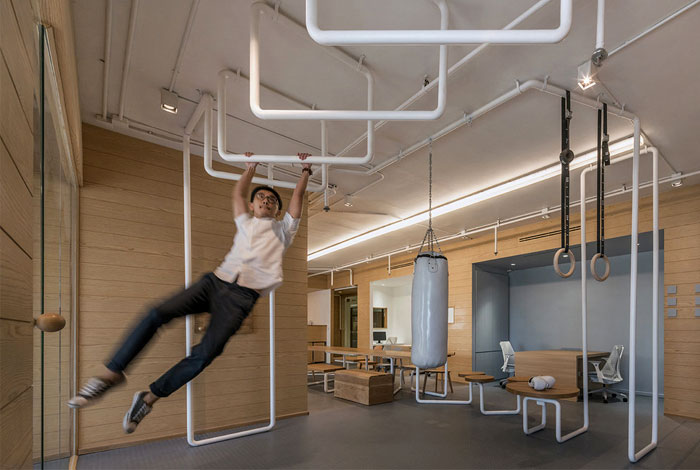
Integrating fitness elements into office design is paramount for ensuring employee health and wellness. Providing on-site gym facilities or organizing fitness classes within the workspace encourages physical activity while eliminating barriers associated with accessing external exercise amenities.
Furthermore, incorporating standing desks, balance boards, or exercise balls as part of active workstations promotes movement throughout the day. This integration not only supports posture improvement but also boosts energy levels by counteracting prolonged periods of sitting.
Another effective approach involves encouraging physical activity through accessible resources such as walking paths within the premises or installing bike storage facilities for commuting employees. Creating environments that facilitate movement helps combat sedentary behavior while promoting an active lifestyle among workers.
Final Remarks
You’ve now explored the essential elements of creating a vibrant and productive office space. By focusing on maximizing natural light, incorporating nature indoors, implementing ergonomic design, adding artistic elements, and embracing flexible layouts, you can transform your workspace into a hub of creativity and innovation. Integrating technology and prioritizing health and wellness further enhance the overall work environment. Remember, a well-designed office space isn’t just about aesthetics; it directly impacts productivity, employee satisfaction, and even client impressions.
As you consider revamping your office space or designing a new one, keep in mind that these elements are not just trends but crucial factors for success in today’s dynamic work environment. Embracing these principles will not only create a more inviting and inspiring workspace but also contribute to the overall success of your business.
Frequently Asked Questions
What are creative office spaces?
Creative office spaces are designed to inspire and stimulate innovation, collaboration, and productivity. They often feature open layouts, vibrant colors, unique design elements, and flexible work areas to foster creativity and a dynamic work environment.
How does natural light impact creative work environments?
Natural light in an office space can enhance mood, energy levels, and overall well-being of employees. It also reduces reliance on artificial lighting which can lead to cost savings. Maximizing natural light creates a more inviting and uplifting workspace conducive to creativity.
Why is incorporating nature indoors beneficial for an office space?
Bringing nature indoors with plants or green walls not only improves air quality but also promotes a sense of calmness and relaxation among employees. This biophilic design approach fosters creativity while contributing to a healthier work environment.
What role does ergonomic design play in enhancing productivity?
Ergonomic furniture and equipment are essential for supporting employee comfort, reducing the risk of injury or strain, and promoting better posture. By prioritizing ergonomic design in the workplace, employees can focus on their tasks without discomfort or distraction.
How do artistic elements contribute to the office environment?
Artistic elements such as murals, sculptures or unique decor pieces can infuse personality into the workspace while sparking creativity. They serve as conversation starters among colleagues and create an inspiring atmosphere that stimulates innovative thinking.

